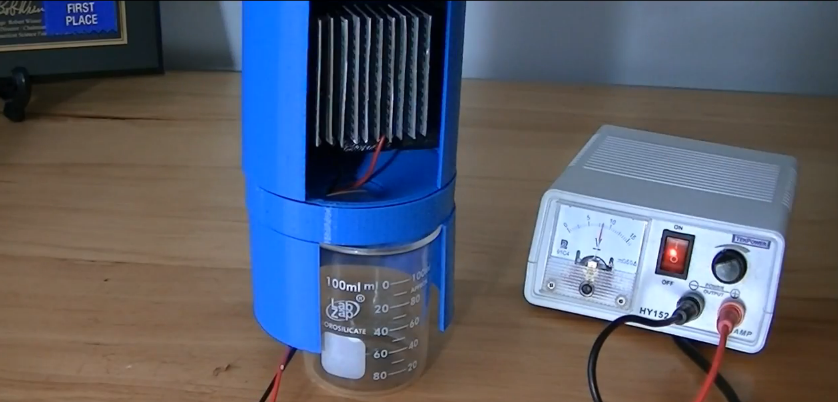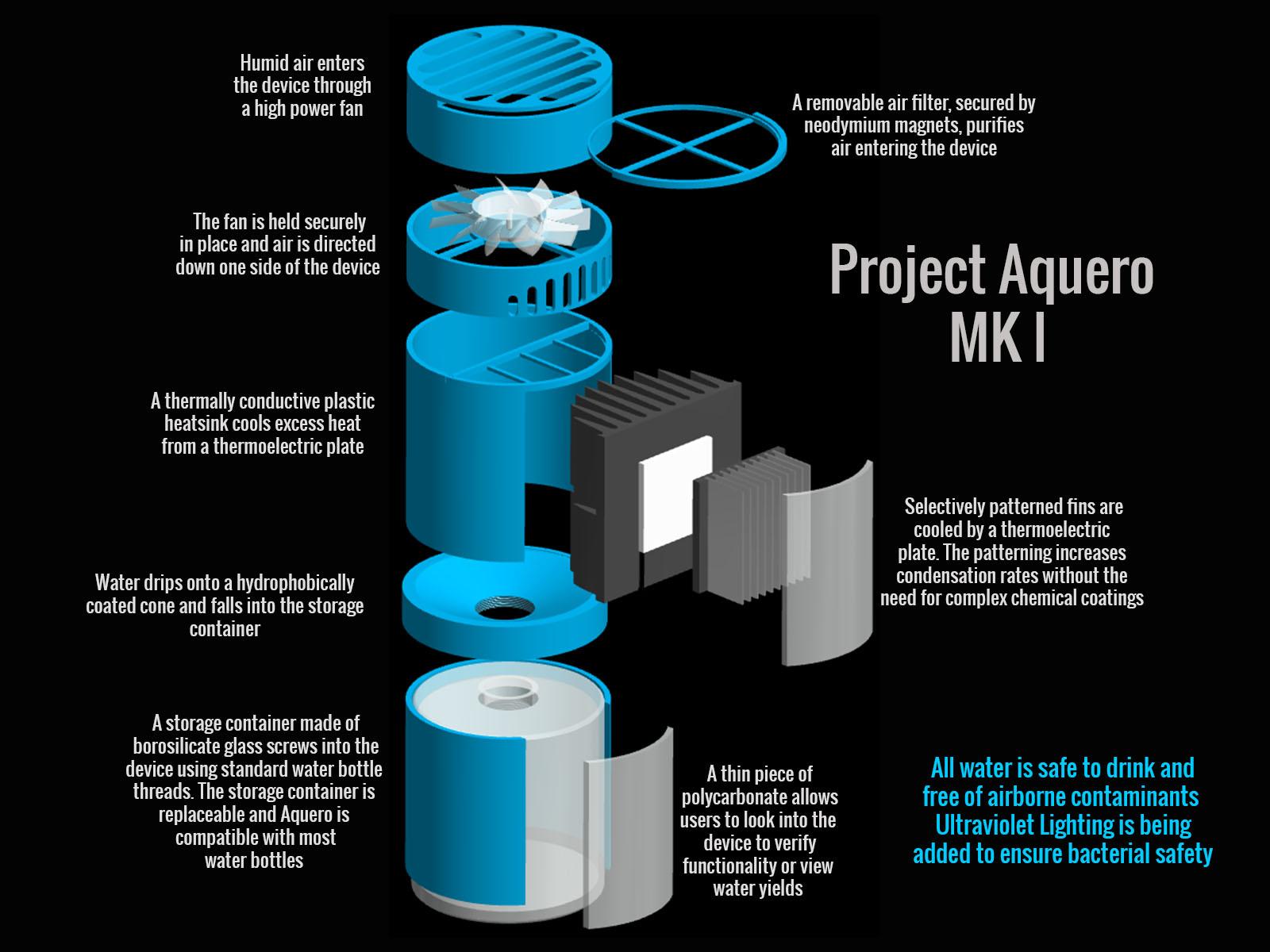Project Aquero is Using 3D Printing to Pull Drinkable Water from Thin Air
Published on by Carol Liu, Castagra - Marketing Manager in Technology
Only about 2.5% of the water on our planet is actually drinkable fresh water, and of that water less thanhalf is actually safe for us to consume. A lack of clean and drinkable water isn't just a problem faced by those who live in arid desert regions; there are many areas of the world where residents are unable to use local sources of freshwater due to pollution or simply the inability to remove natural impurities. There are also people living in disaster areas where the local water delivery system has been disrupted or the water otherwise contaminated.

But a group of researchers behind theProject Aqueroinitiative believe that their mostly 3D printable, portable, self-filling water bottle is one way to combat those types of water shortages. Their MK1 prototype is currently capable of generating about 50mL of water per hour under average conditions. Granted, that isn't a huge amount of water, but it is a lifesaveras an emergency or ancillary source of fresh water.
The process used by Project Aquero is actually very simple and based on common cooling and water production technology. There is a small but powerful fan on the top of the device about the size of a computer fan that blows warm air down onto a plastic heatsink. This rapid change in temperature causes moisture to condense on specially designed fins where it will then drip down into the collection bottle. There is also a specially designed pattern on the condenser fins that allow it to shed water as quickly as possible, increasing the amount of water that will be brought to the dew point.

Project Aquero is essentially a 3D printable dehumidifier device that has simply been shrunk down to the size of a typical water bottle. And that portability is what makes it such an interesting project. The final water collection device could be included in survival kits for lifeboats or even carried by hikers or people camping in remote areas.
The original article can be found here.